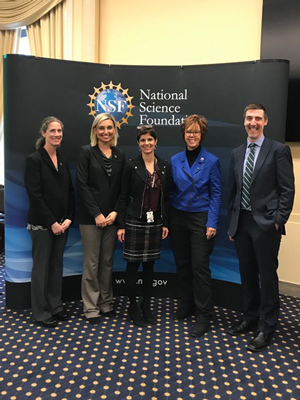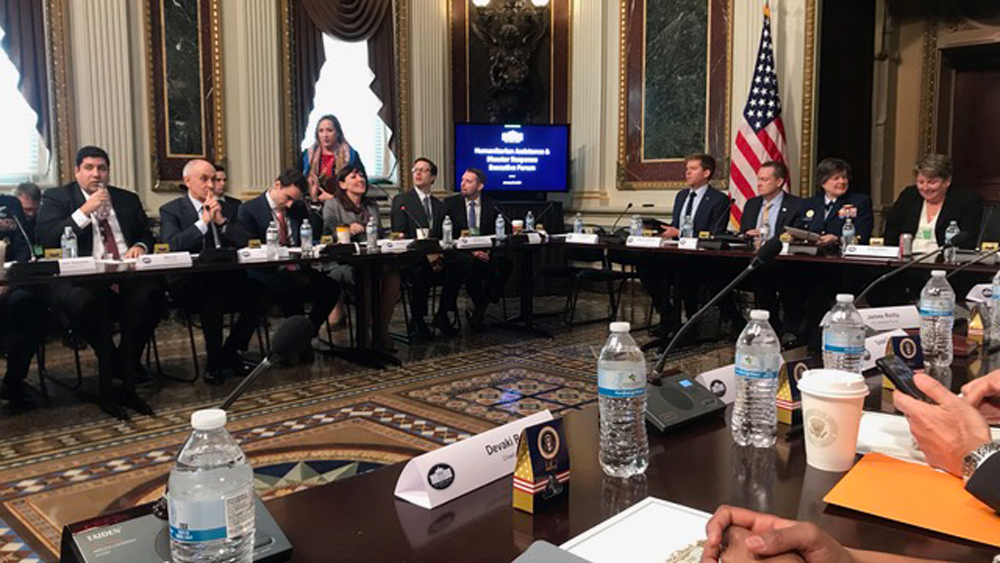
From drones guiding rescuers during hurricanes to robots navigating through collapsed buildings to find survivors, engineering is making a mark in the field of response and emergency aid.
A leader in this area, Dr. Robin Murphy, Raytheon Professor in the Department of Computer Science and Engineering at Texas A&M University, recently attended the White House Humanitarian Assistance and Disaster Response (HADR) Executive Forum and was featured at the National Science Foundation (NSF) Natural Disaster Resiliency Event on the Hill. She was chosen to participate in each for her expertise in the field of artificial intelligence and robotics for emergency responders during disasters.
“The confluence of the two events shows that the nation is catching up to what we’ve known at Texas A&M all along – that reducing the impacts of disasters requires multi-disciplinary, systems science,” Murphy said. “I was proud to represent the tremendous work being done by my group and throughout the Texas A&M System.”
As part of the NSF Natural Disaster Resiliency Event on the Hill on Jan. 28, Murphy was one of five speakers selected to discuss disasters and the impact that her research has had on first response. To demonstrate, she brought along two of her robotic companions – Bujold (a ground robot used at ground zero of the 9/11 attacks on the World Trade Center) and Kelly (an unmanned aerial system that Murphy and her team have used during Hurricanes Irma and Michael, and the Kilauea volcanic eruption).

“I have been researching disaster robotics since 1995 and am the first principal investigator to have an NSF grant about rescue robots,” Murphy said.
Two days after the NSF event, Murphy joined the HADR executive forum at the White House along with representatives from Google, Microsoft, Facebook, Verizon, AT&T, National Oceanic and Atmospheric Administration (NOAA), branches of the military, FEMA and major emergency management agencies.
“My role was to discuss what was available in the academic sector from my work at Texas A&M and the Center for Robot-Assisted Search and Rescue to contribute to a clearinghouse of datasets, algorithms, computing resources and domain expertise,” Murphy said.
As Murphy explained, such contributions include the largest known open set of small aerial system imagery taken during disaster response, professional training courses for practitioners, and documentation and expertise from over 30 disasters in five countries.